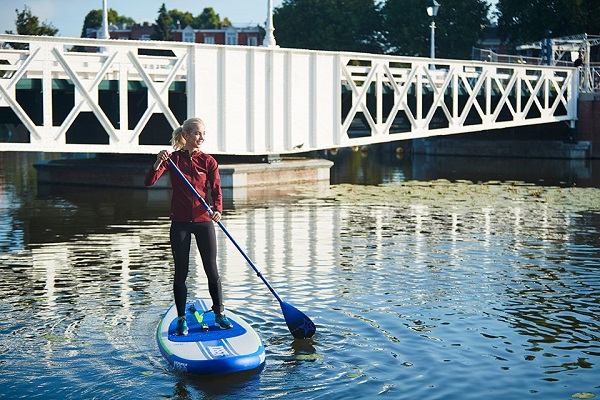Now that the season is about to start, many of us will get on the water again. This is worth a celebration on it’s own. Unfortunately this celebration turns into irritation the next day when you step out of bed and feel your sore muscles. Yep, performing (water)sports for the first time again often leads to these sore muscles again because we just had a winter without any (water)sports. What can we do about that? What are the reasons we feel like this? Read on if you want to get to know about this phenomenon and how muscles are composed! Oh, everything that’s written in this article is based on the latest scientific research.
How muscles & muscle soreness work
First, it’s important to understand the process underlying muscle soreness. Muscle soreness is closely related to muscle growth, but it is not the same! Therefore it is important not to believe people who brag about muscle soreness after a hard work out, because this does not automatically lead to muscle growth. In a nutshell, three factors have impact on muscle soreness (and muscle growth):
- Time under tension: the longer the tension (holding on to your wakeboard handle) or the heavier the weight, the more this tension will increase.
- Metabolic stress: muscles secrete a waste product named lactate when the tension increases. The more tension, the more waste product.
- Muscle damage: when after a certain point of tension (which depends on how strong the muscle is), the muscle will get damaged. The more tension after this point, the more damage.
Muscle growth
The key is not to go beyond the point where the tension gets so big that the muscle get’s damaged. Before this point, your muscles are stimulated to strengthen itself in order to withstand the same tension in your next workout. This is known as muscle growth.
Muscle damage
Once you get beyond this point, the muscle gets damaged. The metabolic stress becomes high and too much waste product, lactate, is produced. This is often why your muscles feel sore.
Recovering from muscle damage: protein
When damaged, your muscles obviously have to recover from that. Protein is the single most important building block for this. Muscles have a maximum amount of protein they are able to ‘absorb’ when recovering. Per day this is 1.6 grams of protein per kilogram of bodyweight. The more muscle damage, the more protein the muscle needs to have to recover from the damage. Hence, the less protein is left to build a stronger muscle to handle the same tension next time. While you need that stronger muscle the next time you are doing the same sport again with that same level of tension.
How to prevent this muscle damage
The conclusion is to get to know your body and know what your muscles can handle before they get damaged. This will make you more effective. If the next time your muscles get so sore where you cannot lift your arm or cannot walk the stairs, you’ll know you’ve gone too far. Remember the following two statements:
- Do not train to failure! Do not believe people who say muscle soreness is good for you or that muscles only grow when sore. This is simply not true.
- Simply sport or train more often. While not training to failure, your muscle will grow because the tension is still there while there is also enough protein left to ‘repair’ the muscle and become stronger after the working load.

Muscle soreness: Do’s & Don’ts
Trial & error will make sure you will discover your optimal training load. Muscle soreness is inevitably part of this error. What can you do about it then? Here are some tips.
Do’s
Pre sport session:
- Warm up your muscles. Perform a the movement you are looking to do with less tension (weight or time under tension). Special note: this does NOT include stretching. More on that at ‘don’ts’.
Post sport session:
- An ice bath (just pull of your wetsuit and jump in the water :P).
- A warm bath. This will stimulate Bloodflow.
- Eat well, stick to the 1.6 grams of protein.
- Foam roll: this will stimulate the disappearance of the waste product lactate.
Extra tip: do not train with muscle soreness. While your muscles are recovering you do not want to damage them again; your working load of your last watersport session will be for nothing.
Don’ts
Never stretch. Stretching first of all does not ‘lengthen’ a muscle. While lengthening is the wrong word (a muscle cannot get longer), stretching will only ensure you can increase your Range Of Motion (your movement) for a maximum of 30 minutes. It’s temporary.
Instead, if you’re looking to increase your Range Of Motion you are looking for neural adaption. Neural adaption is long term and will happen only if you’re doing the same movement more often. Your body will then slowly adapt to that movement and get better over time.
Scientific research even showed (static) stretching is harmful. Static stretching means getting into a specific position for a few seconds (we do not mean yoga with this, that is different to this). It will lead to less power output, less strength, it decreases muscle growth and can lead to muscle damage.
We hope this blog gave you more insights on how your body reacts to the sport you’re performing. With it, you’ll enjoy your next watersports session some more!
.jpg)
 0Einkaufswagen
0Einkaufswagen 
 Menü
Menü


.jpg)





